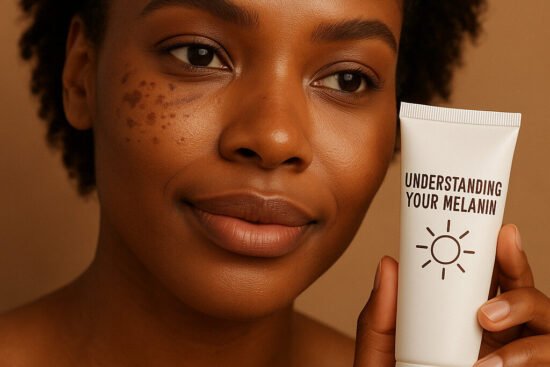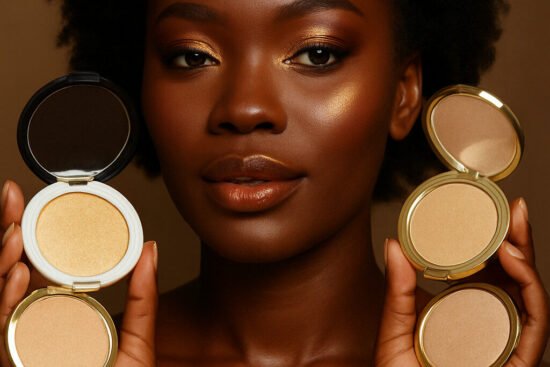
Many people wonder about the differences between co-washing and traditional shampooing, especially when it comes to maintaining healthy hair. In my experience, each method has its own benefits and drawbacks. Co-washing, which involves using a conditioner to cleanse, can help retain moisture and minimize damage to texture, but it may not effectively remove buildup for some hair types. On the other hand, traditional shampooing is great for deep cleaning but can strip away important oils if done too frequently. Let’s dive deeper into each option to see what works best for you.
Key Takeaways:
- Co-washing is gentler on hair, as it uses conditioner to cleanse without harsh detergents found in traditional shampoos.
- Co-washing benefits curly and textured hair types by maintaining moisture and reducing frizz.
- Traditional shampooing effectively removes product buildup and oils, promoting a deeper clean compared to co-washing.
- Some individuals may experience greasiness or scalp issues with co-washing due to inadequate cleansing, especially those with finer hair types.
- Using traditional shampoo can lead to dryness if used too frequently, making proper moisture retention necessary.
- Finding the right balance between co-washing and shampooing can be beneficial; alternating between both methods may yield optimal results.
- Personal hair type, lifestyle, and product usage will determine which cleansing method may work best for an individual.
The Methodology Behind Co-Washing
Co-washing, or conditioner washing, involves using a cleansing conditioner instead of traditional shampoo to cleanse the hair. This method is particularly beneficial for those with curly or textured hair types, as it helps to maintain moisture and reduces frizz. The technique focuses on gently removing dirt and buildup without stripping the hair of its natural oils, promoting healthier and more manageable hair over time.
Ingredients that Make a Difference
The success of co-washing largely depends on the ingredients found in cleansing conditioners. Look for products that contain natural oils, such as coconut or argan oil, which provide hydration and nourishment. Additionally, mild surfactants like cocamidopropyl betaine effectively help cleanse the hair without causing excess dryness or irritation.
The Cleansing Mechanism of Co-Washing
Co-washing utilizes a different approach for cleansing than traditional shampooing. It relies on a process that combines conditioning agents with gentle cleansing properties to remove dirt and oils. Rather than lathering up and stripping the hair, the conditioning properties wrap around the hair strands, effectively detangling and hydrating while simultaneously removing impurities. This method ensures that your hair remains well-nourished without the harsh effects that can accompany regular shampoos.
The blend of conditioning agents and mild cleansers in co-washing products works synergistically to cleanse without over-drying. An effective co-wash won’t produce the same bubbly lather as shampoo, but instead delivers a creamy, emulsifying texture that clings to impurities and washes them away. For those with sensitive scalps or dry hair, this gentler approach reduces irritation and promotes healthier growth and shine, making it particularly suitable for individuals who may struggle with product build-up or scalp issues.
Shampooing: Benefits and Limitations
Traditional shampooing offers several advantages, including the ability to thoroughly cleanse your hair and scalp. Specifically designed to remove oil, dirt, and product buildup, it can provide a refreshed and rejuvenated feeling. However, shampoos often contain sulfates and other harsh ingredients that can strip the hair of its natural oils, leading to dryness or damage if used excessively. Balancing these benefits with the potential for over-cleansing becomes particularly important in creating an effective hair care routine.
Clarifying Properties of Traditional Shampoos
One of the standout benefits of traditional shampoos is their clarifying properties. These products are formulated to remove not just surface dirt, but also buildup from styling products such as gels, sprays, and oils. This clarifying effect can result in cleaner and lighter hair overall, promoting better absorption of conditioners and treatments. In fact, regular use of clarifying shampoos can ensure that your hair looks vibrant and healthy, making it a popular choice for individuals who use multiple hair products daily.
Potential Drawbacks for Different Hair Types
While traditional shampooing can be beneficial, it also has its pitfalls for various hair types. For example, individuals with curly or coily hair may find that sulfates can exacerbate dryness and frizz. On the other hand, people with oily hair may need more frequent washing to keep excess sebum at bay. The key is understanding your specific hair needs and adjusting your routine accordingly, ensuring you don’t lean too heavily on one cleansing method. Any imbalance in your routine could lead to unwanted hair issues.
| Pros of Shampooing | Provides deep cleansing |
| Cons of Shampooing | Can strip natural oils |
| Best for | Oily or product-heavy hair |
| Not ideal for | Dry, curly, or textured hair |
| Important note | Choose sulfate-free options if needed |
Traditional shampooing can have drawbacks depending on your hair type. For instance, individuals with fine or thin hair may experience quick oil buildup, necessitating frequent washes. Meanwhile, coarse hair types may find that regular shampooing leads to excess dryness, causing the hair cuticle to lift. Those with a sensitive scalp may also react adversely to certain ingredients. Adapting your product choice to your unique hair texture and concerns is vital to maintaining healthy hair. Any misstep here can lead to increased damage or an overall unfavorable appearance.
- Fine hair may need frequent washing
- Curly hair often struggles with dryness
- Coarse hair may benefit from less shampooing
- Sensitive scalp can react to sulfates
- Any individual’s needs should guide shampoo selection
| Hair Type | Shampoo Recommendation |
| Fine hair | Frequent, lightweight formulas |
| Curly hair | Milder, hydrating options |
| Coarse hair | Less frequent, moisturizing shampoos |
| Sensitive scalp | Sulfate-free, soothing products |
| Oily hair | Clarifying shampoos as needed |
The Philosophical Divide: Hair Care Preferences
Hair care choices often reflect deeper philosophical divides about personal care and grooming. Some individuals see their hair regimen as a form of self-expression, believing that the products they use speak to their values and lifestyle. With co-washing, enthusiasts argue that gentle cleansing aligns with a more holistic approach to beauty, emphasizing nourishment over harsh treatment. In contrast, traditional shampoo advocates cling to the notion of purity and cleanliness, viewing it as a non-negotiable step in their routine for maintaining healthy hair. These varying ideals create a notable tension within the hair care community.
Co-Washing as a Natural Alternative
Co-washing is often embraced for its natural appeal, as it leverages the moisturizing properties of conditioners without the stripping agents found in many traditional shampoos. For those with curly or textured hair, using a cleansing conditioner can lead to enhanced moisture retention and reduced frizz. Research indicates that shampoo use can lead to damage, resulting in a growing number of individuals seeking out co-washing as a gentler option that aligns with their desire for healthier, more manageable hair.
The Shampooing Cult: Why Some Won’t Let Go
Many devotees of traditional shampoo find it hard to abandon their long-held grooming rituals. This stems from a deep-seated belief that thorough cleansing with strong detergents is important for health and hygiene. Many people associate squeaky-clean hair with freshness and effectiveness, leading them to believe that only traditional shampoo can deliver this level of cleanliness. Additionally, long-standing beauty industry marketing reinforces these beliefs, creating a dependency on the idea that traditional cleansing agents are synonymous with quality and efficacy.
Even when faced with evidence supporting co-washing’s advantages, some traditionalists resist change. For example, a recent survey showed that over 60% of shampoo users felt uncomfortable switching to co-washing, citing fears about producing oily hair and scalp buildup. This hesitation illustrates how entrenched habits and beliefs can be, fueled by the perception that shedding the familiar (shampoo) requires a leap into uncertainty. The commitment to a traditional shampoo routine is often intertwined with personal identity and cultural norms, making it a significant barrier for those considering alternatives.
Practical Considerations: Cost and Availability
Cost and availability play a significant role in your decision between co-washing and traditional shampooing. Co-washing products tend to be more affordable upfront, particularly if you’re purchasing a larger bottle that lasts a while. However, many traditional shampoos offer smaller sizes that can be lighter on the wallet initially but may require frequent replacements. You’ll want to evaluate which option aligns better with your budget and hair care habits.
Co-Washing Products vs. Traditional Shampoo Prices
Generally, co-washing products are priced competitively with traditional shampoos, but they often provide added value by combining cleansing and conditioning properties. For instance, I’ve found that popular co-washing products can retail for around $10-15 for a 12 oz bottle, while mid-range shampoos might cost about $5-8 for a similar size. The amount you use regularly will ultimately affect your overall spending, especially if you get extended use from a co-wash.
Accessibility Across Different Market Segments
Accessibility varies between co-washing and traditional shampoos, impacting consumers differently. Co-washing products, while gaining popularity, may not be as readily available in all retail environments compared to traditional shampoos, which dominate supermarket and drugstore shelves. I’ve noticed that many beauty supply stores have started to stock specialized co-wash products, but options can be limited if you live outside larger urban areas.
Consumer research indicates that traditional shampoo makes up approximately 60% of the hair care market, which translates to better availability across different price points and store types. Conversely, while co-washing is becoming more mainstream, you might find it challenging to locate a variety of options in smaller towns or budget chains. This disparity can influence your choice, particularly if convenience and accessibility are significant for you. Exploring online retailers can help you overcome these barriers, but traditional shampoo remains the more ubiquitous choice for most consumers.

Expert Opinions and Consumer Experiences
Insights from Haircare Professionals
Consulting with haircare professionals reveals a range of perspectives on co-washing versus traditional shampooing. Many stylists agree that co-washing is beneficial for curly and textured hair types, as it keeps moisture levels high and tames frizz. However, they often warn that not all conditioners are created equal, and one must read labels carefully to avoid products with heavy silicones that can lead to buildup. A common recommendation is to alternate between co-washing and clarifying shampoos to achieve the best results.
Real-Life Testimonies: Users’ Stories
Users of both methods share their experiences, highlighting the varying impacts on their hair health. Some report that co-washing resulted in significantly improved moisture retention and softness, while others noted grease accumulation and lack of scalp cleanliness. Traditional shampoo users frequently mention feeling more confident about their scalp hygiene but may struggle with dryness after frequent use.
Many individuals have transformed their hair care routines after trying both methods. For example, Sarah, a 34-year-old with wavy hair, found that co-washing eliminated her frizz and added a natural shine, leading her to embrace her waves more fully. In contrast, Jason, who has straight hair, experienced build-up when co-washing too frequently, ultimately switching back to a sulfate-free shampoo that leaves his scalp feeling refreshed. These personal stories illustrate that your ideal hair care routine might involve experimenting to find the right balance.
Conclusion
Hence, choosing between co-washing and traditional shampooing ultimately depends on your individual hair type, lifestyle, and personal preferences. I’ve found that co-washing can be a gentle, hydrating alternative for those with dry or curly hair, while traditional shampooing effectively removes product buildup and excess oils. Evaluating the pros and cons of each method allows you to tailor your hair care routine to achieve the healthiest hair possible. Whether you opt for one method over the other, the key is finding what works best for you and your hair’s unique needs.
FAQ
Q: What is co-washing and how does it differ from traditional shampooing?
A: Co-washing, or conditioner washing, involves using a conditioner instead of shampoo to cleanse the hair. Traditional shampooing uses a detergent-based formula to remove dirt and oils. The key difference is that co-washing aims to clean the hair without stripping it of natural oils, while traditional shampoos can sometimes be harsh and drying.
Q: What are the benefits of co-washing?
A: Co-washing can provide numerous benefits, including increased moisture retention, reduced frizz, and enhanced curl definition. It can be especially beneficial for those with curly or textured hair types, as it helps maintain the hair’s natural oils and prevent dryness. Additionally, co-washing can promote a more vibrant and healthy scalp.
Q: Are there any downsides to co-washing?
A: While co-washing has its advantages, it may not be suitable for everyone. Some people may find that their hair becomes greasy or weighed down if they do not use shampoo regularly. Additionally, co-washing might not effectively remove certain product buildup or excessive oils. It’s imperative to assess your hair type and scalp condition to determine if co-washing is appropriate for you.
Q: Who should consider traditional shampooing instead of co-washing?
A: Individuals with fine or oily hair may benefit more from traditional shampooing, as it can effectively remove excess oil and product buildup. Additionally, those who often use heavy styling products or experience scalp issues like dandruff may find that a clarifying shampoo is more effective in maintaining a clean and healthy scalp.
Q: Can I alternate between co-washing and traditional shampooing?
A: Yes, many people successfully incorporate both methods into their hair care routine. This approach allows for the benefits of co-washing while still occasionally using shampoo to thoroughly cleanse the scalp and hair. Finding the right balance can depend on your hair type, lifestyle, and personal preferences.
Q: How do I choose the right products for co-washing and traditional shampooing?
A: When deciding on products, look for a sulfate-free conditioner for co-washing that provides moisture without weighing hair down. For traditional shampooing, opt for a gentle, sulfate-free shampoo if possible, as these formulas are less likely to strip the hair of its natural oils. Reading product labels and considering your hair type will help in making a suitable choice.
Q: How frequently should I co-wash or shampoo my hair?
A: The frequency of co-washing or shampooing depends on your hair type and lifestyle. Those with dry or curly hair may benefit from co-washing more regularly, while individuals with oily or finer hair might find shampooing once or twice a week to be sufficient. It’s imperative to listen to your hair’s needs and adjust your routine accordingly.











